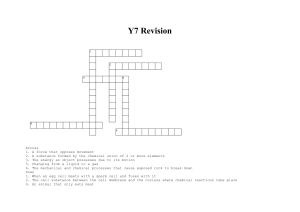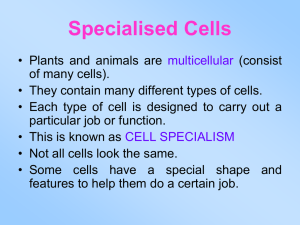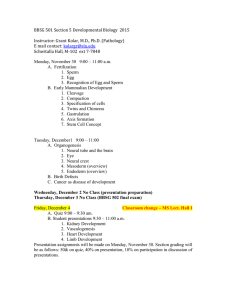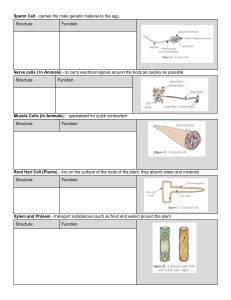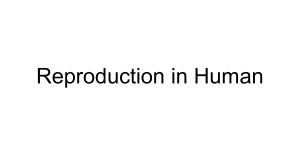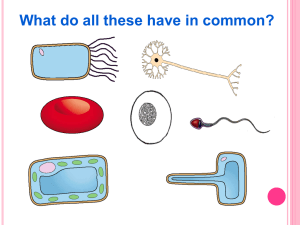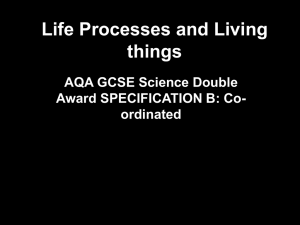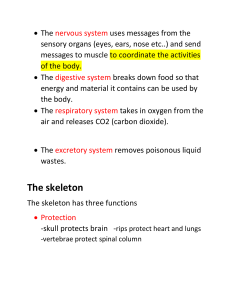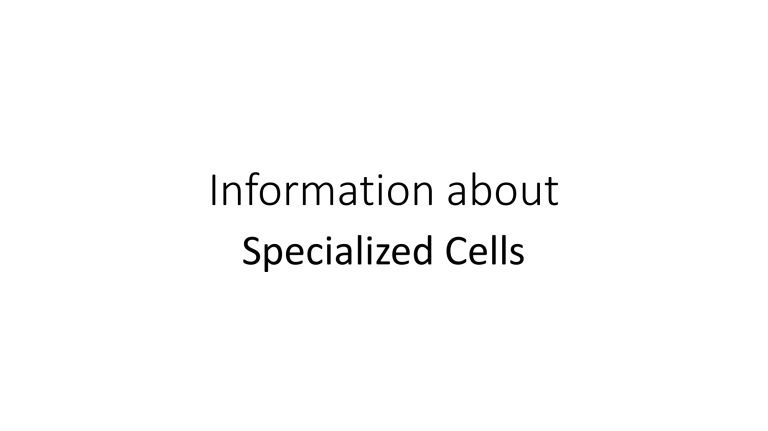
Information about Specialized Cells Red bloodRed cellsBlood Cells Structure: • Large surface area because of dimple shape • Contains haemoglobin which picks up oxygen • Has no nucleus to make room for more oxygen Function: • Carries oxygen from the lungs to the body and carbon dioxide from the body back to the lungs. Sperm cells Sperm Cell Structure: • Have a long tail so they can swim to find an egg • There are enzymes (like scissors) in the head of the sperm to help the sperm get into the egg • Made in the testis of males Function: • To carry the father’s genetic information (DNA) to the egg Root hair cells Root Hair Cell Structure: • Large surface area to absorb lots of water • Thin cell wall to allow water to pass through easily • Large vacuole for storing water • Doesn’t contain any chloroplasts unlike all other plant cells Function: • Absorbs minerals and water from soil Palisade Cell Palisade Cell Structure: • Found in the top of a leaf • Tall and has a large surface area to catch as much sunlight as possible • Packed with chloroplasts to absorb sunlight Function: • to carry out photosynthesis • to help make plant food. Egg (Ovum) Cell Cytoplasm containing yolk Egg Cell Structure: • Contains yolk that acts as a food source for the developing embryo (baby) when fertilised • Much larger than other animal cells (look at the size of the sperm next to it!) Function: • Layer of jelly Nucleus Carries the mother’s DNA Ciliated Cell Structure: • They line all the air passages down to the lungs. Nucleus • They have tiny hairs called cilia. Function: • Designed to stop Lung Damage • Hairs sweep mucus with trapped dust and bacteria back up the throat to be swallowed. cilia • If you smoke then the hairs die and the mucus builds up leading to the well known smoker’s cough – however if you stop they grow back!
